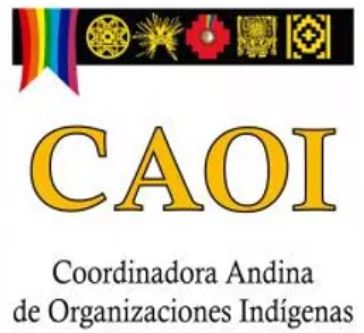Publications

Building global agendas and alliances from territorial spaces, video in Spanish
Henkjan Laats. 2020. Andean Amazon Regional Seminar on Agroecology and Food Sovereignty, Bartolomé de las Casas Center.

Een agroecologische evolutie is beter voor Afrika dan een ecomodernistische revolutie, document in Dutch.
Henkjan Laats. 2020. From Voedsel Zaak.
De agroecologische landbouwevolutie die uitgaat van lokale omstandigheden en kennis, maar ook openstaat voor technische verbeteringen is het antwoord op het wereldwijde voedselvraagstuk. De nadruk van de artikelen ligt op het promoten van een Afrikaanse ‘ecomodernistische’ landbouwrevolutie. Deze zal de afhankelijkheid van buitenlandse multinationals niet doen afnemen, want ze is volledig afhankelijk van zaken als zaden at kunstmest die geleverd worden door multinationals.

Welvaart na covid-19: lessen uit niet-westerse benaderingen, document in Dutch.
Doreen Van Norren. 2020. Clingendael Spectator
Brede welvaart is een beweging die is opgekomen als verzet tegen het eenzijdig put van welvaart in termen van brute nationaal product (bnp) – een puur financiële maatstaf voor de toegevoegde waarde van geproduceerde producten en diensten, of dej zijn schanli de welvaart en diensten. Hoe meet je welvaart? In toenemende mate is er verzet tegen het eenzijdig put van welvaart in termen van gross nationaal product (bnp). Voorloper van het breder trekken van de discussie was Bhutan met ‘gross nationaal geluk’. Minder bekend zijn Zuid-Afrika’s Ubuntu-beleid in het streven naar harmonie met de natuur door landen als Ecuador in Bolivia. De COVID-19-crisis heeft de urgentie van deze problematiek alleen maar verhoogd, aangezien de verspreiding van pandemieën mede afhankelijk is van onze omgang met de natuur.

We, citizens of China, South America and Europe, are a community of destination, document in Spanish.
Henkjan Laats. 2015. Le Monde Diplomatique.
On the occasion of our “Third Encounter of Dialogue between the civil societies of China, Europe and South America”, within the framework of the People’s Summit, parallel to the UN COP20 Summit to face Climate Change, in Lima, Peru, in December 2014, we left this mark on the path of our collective reflection and commitment, we raised our voices to speak to the conscience of humanity.
LINK TO PDF (in Spanish)

Cachuela Esperanza hydroelectric project in Bolivia: ¿ Megasueño or megapesadilla ? , document in Spanish.
Henkjan Laats. 2009. Rebellion.
The Cachuela Esperanza hydroelectric project is part of the Río Madera Complex, the most controversial project of IIRSA (the Initiative for the Integration of South American Regional Infrastructure). The Río Madera Complex consists of two hydroelectric projects in Brazil (San Antonio and Jirao), a binational project on the border of Bolivia and Brazil (Ribeirao) and a project in Bolivia: Cachuela Esperanza. The San Antonio and Jirao projects are already under construction. However, these projects are being questioned for the violation of economic, social, cultural, and environmental rights of the surrounding population. The data presented on Cachuela Esperanza indicates that this project is economically unviable, with more serious environmental impacts than those caused by the Jirao and San Antonio hydroelectric projects.
LINK TO PDF (in Spanish)

The Chronicle of a Death Foretold. The Santa Cruz – Puerto Suárez bi-oceanic transport corridor in Bolivia and its socio-environmental impacts , document in Spanish.
Gustavo Hernandez. 2008. SOUTH Integration .
The bi-oceanic transportation corridor project consists of paving an existing primitive highway that connects the city of Santa Cruz de la Sierra with the town of Puerto Suárez, on the border with the Brazilian city of Corumbá. The highway will connect for the first time the ports of the Pacific Ocean in Chile and Peru with those of the Atlantic Ocean in Brazil, seeking to unleash the international increase in trade and the expansion of agro-industrial, forestry and mining operations. This study proposes that large development projects – especially the construction and / or modernization projects of land communication routes associated with the bi-oceanic transport corridor – are justified solely on the basis of their (supposed) positive impacts judged on the basis of a instrumental rationality model, which for the purposes of this work we classify as “developmentalist”. In particular, this study proposes that the construction of the Santa Cruz-Puerto Suárez bi-oceanic corridor provides a case of significant negative socio-environmental impacts, which are exacerbated by the presence of an institutional framework contrary to the values of sustainability.
LINK TO PDF (in Spanish)

It is urgent to sustain regional integration in new paradigms , document in Spanish.
Henkjan Laats. YEAR . CAOI.
Specialist questions megaprojects of the IIRSA and points out the need for the participation of the peoples in the definition of the political axes of integration.
LINK TO PDF (in Spanish)



